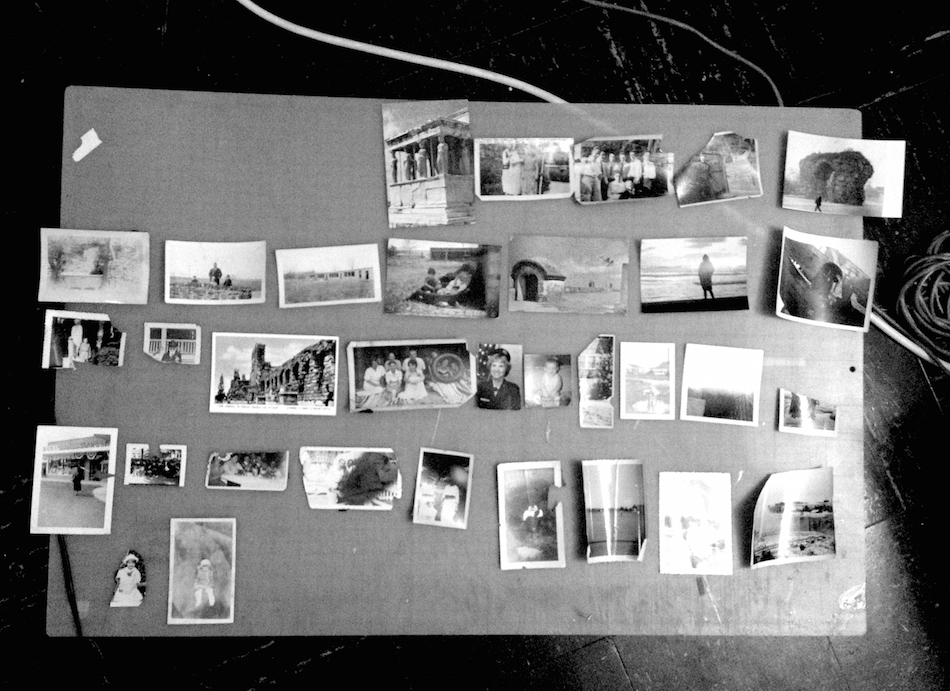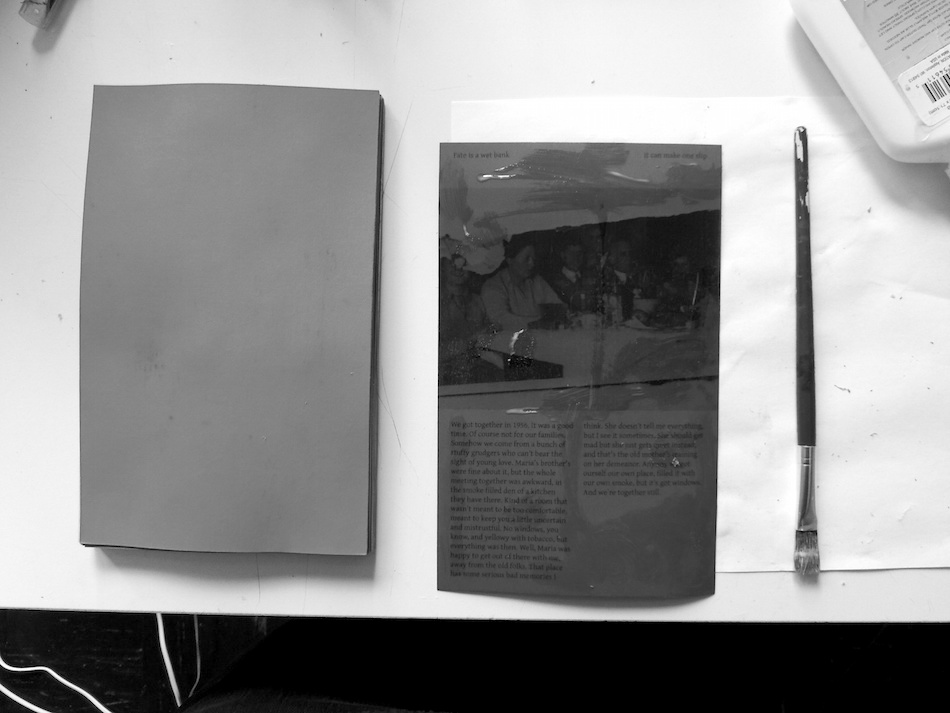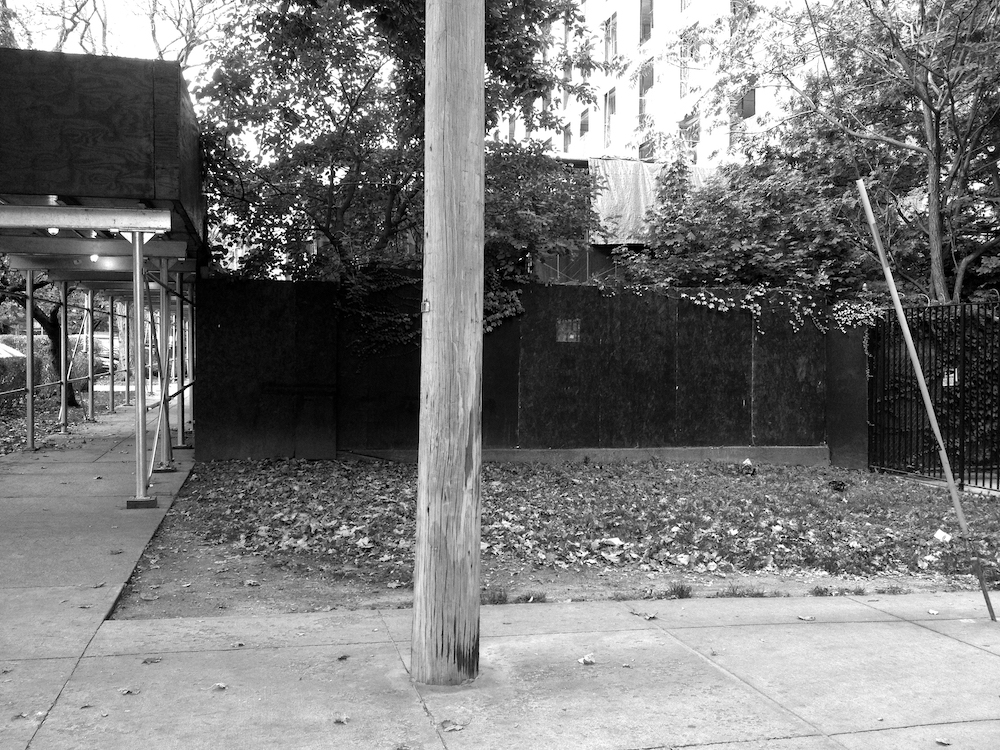Tear Blocks
Soon We Will Be Gone. Destruction is the inevitable fate of most existent things. What we create today will remain only in part. Through the holes created by degradation, new narratives and mystery arise.
One of three parts, "tear-blocks" explore the idea of weathering and erosion.
A tear block is a stack of 40 sheets of 8 x 5 inch paper glued together and mounted onto a card base. The pages are printed with ancient poetry, abandoned family photos, postcards, and written narratives based on the photographs. This content can only be viewed by tearing pages randomly from the block.



The blocks are placed in public places where people are able, and willing to interact with them. The general public become active agents of random change and as the pages are torn from the printed block, the text and images form a collage of new associations. The tear block form is inspired by the passive collage of subway advertisements as they are torn off and replaced.








The website soonwewillbegone.com documented the destruction of each tear block over the course of November, including a “control group” tear block that I destroyed myself (below).


Process
I produced an edition of five tear blocks. They contain 33 photos and postcards that have been separated from their owners, my own fictional "memories" accompanying the images, and excerpts from ancient texts: Instructions of Shuruppak 2600 BC, Legend of Etana 1900 BC, Anitta Text 1750 BC, Amarna Letters 1400 BC, Kurigalzu’s Statue Inscription 1400 BC, Sappho 600 BC, and Heraclitus 500 BC. The most fragmented portions of these texts were used, and paired with the images and narratives. The entire document before gluing is viewable below.
To create the tear block, I first placed the images in meaningful sequence, then digitally composed the pages with the accompanying narratives and ancient writing. With a prototype, I tested the patterns of glue and consequently tearing that were most attractive. Then, with the final design printed and trimmed, I glued each page together with PVA glue, mounted the stack to bases and installed them in public with adhesive velcro.





Above: sequencing the abandoned photographs; assembling with PVA glue; scoping out installation locations; and an example of subway "weathering" that inspired the project.
Below are the intact pages of the tear block.
Soon We Will Be Gone
Project Statement
I began with the idea of destruction, specifically the activities of ISIS destroying World Heritage Sites. Disheartened by the general state of the world, I wanted to see if there could be some positive response towards destruction to undermine acts of cultural cleansing.
Destruction of all scales is innate to human experience, from forgetting details of the day, to losing physical property, to death, to war, to natural disaster. I began to explore human and natural disaster throughout history as a way to understand current conflicts. However placing current events in a long history of destruction only made the situation seem more dark and futile.
I then researched artists that use destruction. For Jean Tinguely’s Homage to New York, a self- destructing kinetic sculpture, “Utter destruction is necessary because [it] is grandiose, spectacular.” The level of destruction testifies to its magnificent existence.

This applies to ISIS destroying cultural heritage — they affirm the value of an artifact by choosing to publicly destroy it — but the likening to Tinguely’s work ends there.
For humans, a grand death does not correspond to a grand life, and when things or people are destroyed against their will, as they almost always are, it is not something to celebrate.
From looking at Tinguely and the work of other artists (Alexander Gutke “The White Light of the Void”, Ariel Schlesinger “Bubble Machine”, Kris Martin “100 years” and “For Whom...”) I became interested in how material corresponds to the idea of destruction.
I turned to the idea of individual memory and forgetting as a kind of destruction. The themes of interest to me were memory, individuality, the inevitability of destruction, natural deterioration, and finding something positive in the midst of these things. This lead to my final proposal:
Destruction is the inevitable fate of most existent things. What we create today will remain only in part. Through the holes created by degradation, new narratives and mystery arise.
Soon We Will Be Gone is a three part exploration of this idea.


